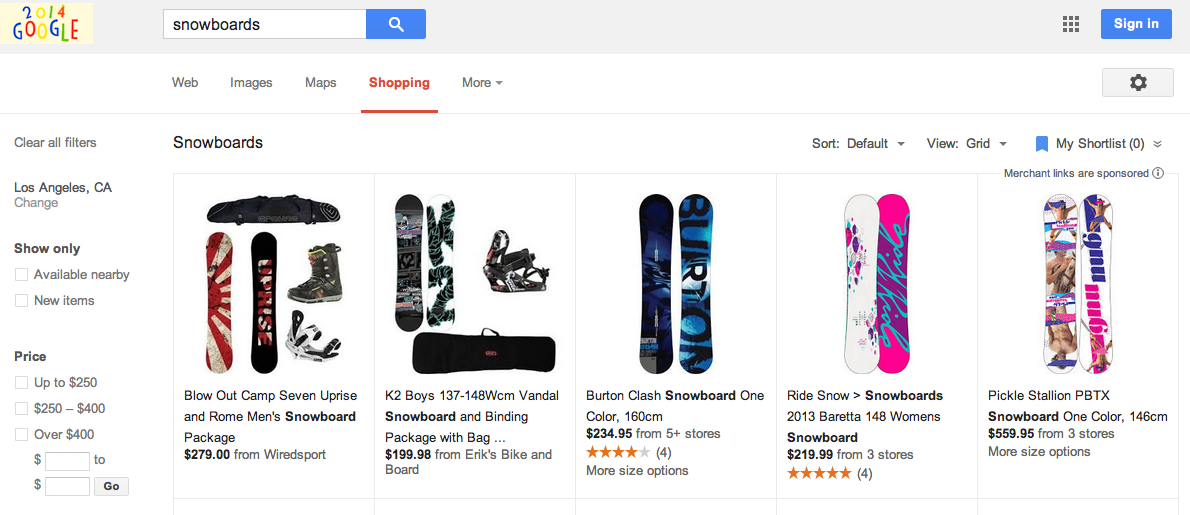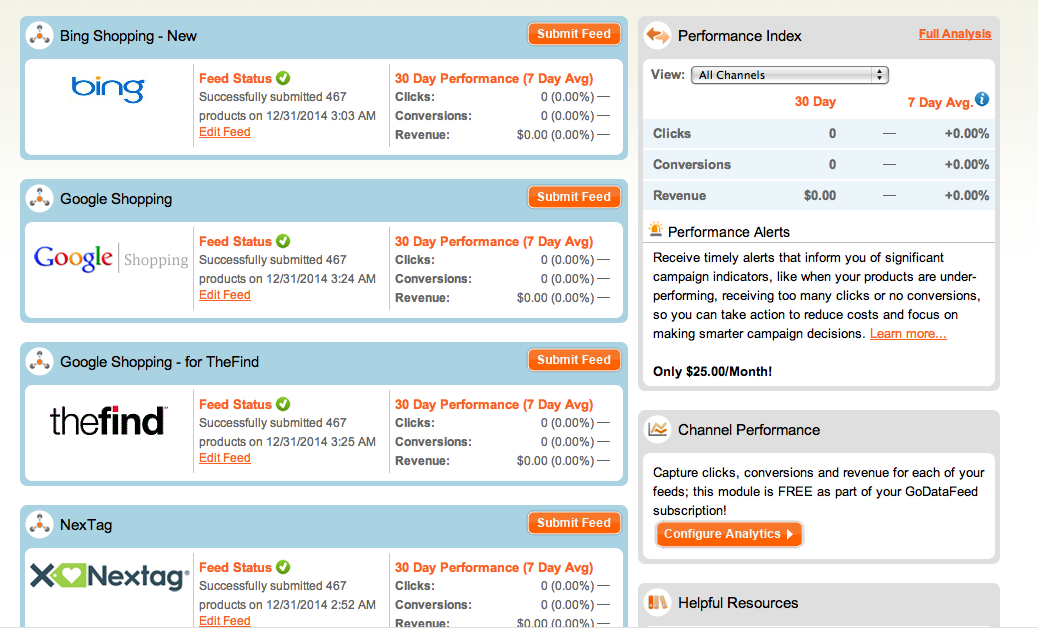
Why You Should be Using Product Listing Ads Right Now
Comparison shopping sites like PriceGrabber, Nextag, and search engines like Google and Bing allow people to research, compare, and check the availability of products all at once. These sites are massive e-commerce aggregates, allowing customers to have access to all types of products from virtually anywhere. As an online retailer, this is exactly why you should be using Product Listing Ads – an effective way to bring your storefront to potential customers’ desktops and mobile devices.
How do they work work?
A consumer goes to a shopping comparison site or search engine and searches for products by category, type, or by a specific product. As an advertiser, you bid for a chance to to be shown in that search query. Similar to paid search, if the consumer clicks on your ad amongst other products, you pay for that click. That click then results in a visit to your website and possibly a purchase.
The next time that same consumer is looking to buy the same or a similar product, they may bypass the whole search process and go directly to your website, resulting in a new customer that may not have found you otherwise.
What are the benefits?
- Comparison and shopping sites connect customers who are looking for products like yours with your website.
- If you’re a smaller retailer or a relatively new or unknown brand, this can help bring more traffic and customers to your website. It’s also good if you don’t have high organic or PPC (Pay-Per-Click) rankings.
- More visibility. You don’t have to wait for customers to come into your store or find your website on their own.
- You can show image ads specifically for what consumers are looking for versus a text PPC ad or an online display ad that may be more general.
How do you set them up?
If you’re an online retailer or e-commerce site, chances are you’re already using an e-commerce solution like Volusion or Shopify to manage your online store and inventory. If you haven’t procured one yet, that would be your first step. Next, you want to set up your account with all your product and inventory information like product images, descriptions, SKUs, product categories, etc. Google requires you to also set up a Google Merchant account before you’re able to create Google Shopping Campaigns. The final piece of the puzzle is a getting a data feed management tool to help manage all the different feeds that go into each of these different shopping engines.
Each engine has their own unique shopping autonomy and categories that require you to manually manipulate your data feeds for each engine. A quick Google search would yield the different requirements for each platform. Properly setting it up from the beginning will save you a lot of effort in the long run and will help to improve the overall profitability of your campaigns. Do the research to see what each engine requires, and use a data feed solution like GoDataFeed to help manage all your feeds.
After you’ve tailored all your feeds for each engine, you’ll have to set bids for your products. For Google, these bids will usually mirror what you might pay for similar keywords within paid search. For the shopping engines, bidding depends on competition and the amount of traffic so starting out will be some what of an experimentation. It helps to do some research for best practices and tips for the particular sites your are interested in.
More and more people are using online channels to do their research and shopping. As a retailer, whether strictly online or brick and mortar, being able to have your products shown to people who are actively looking for products you sell is invaluable. Listing your products on comparison and shopping engines are a great way to gain visibility and increase traffic to your site which will hopefully translate into sales. We recommend starting with Google Shopping first, as that’s where you’ll find most users, and it’s easier to get started if you are already using Google Adwords and Google Display Network for your marketing.
Before committing to the initial time investment, make sure the additional tools needed aren’t cost prohibitive. If you’re an online retailer, you’re most likely already using an e-commerce solution to run your online store so the missing piece is the data feed management tool. Like any other marketing initiative, consider your fixed costs as well as the costs to run the marketing campaigns within the engines and see if it makes sense for your business.
Are you using Product Listing Ads for your business? Tell us what you think of them in the comments.
Get more marketing tips like these by signing up for our weekly email newsletter.
© 2015 – 2018, Contributing Author. All rights reserved.





